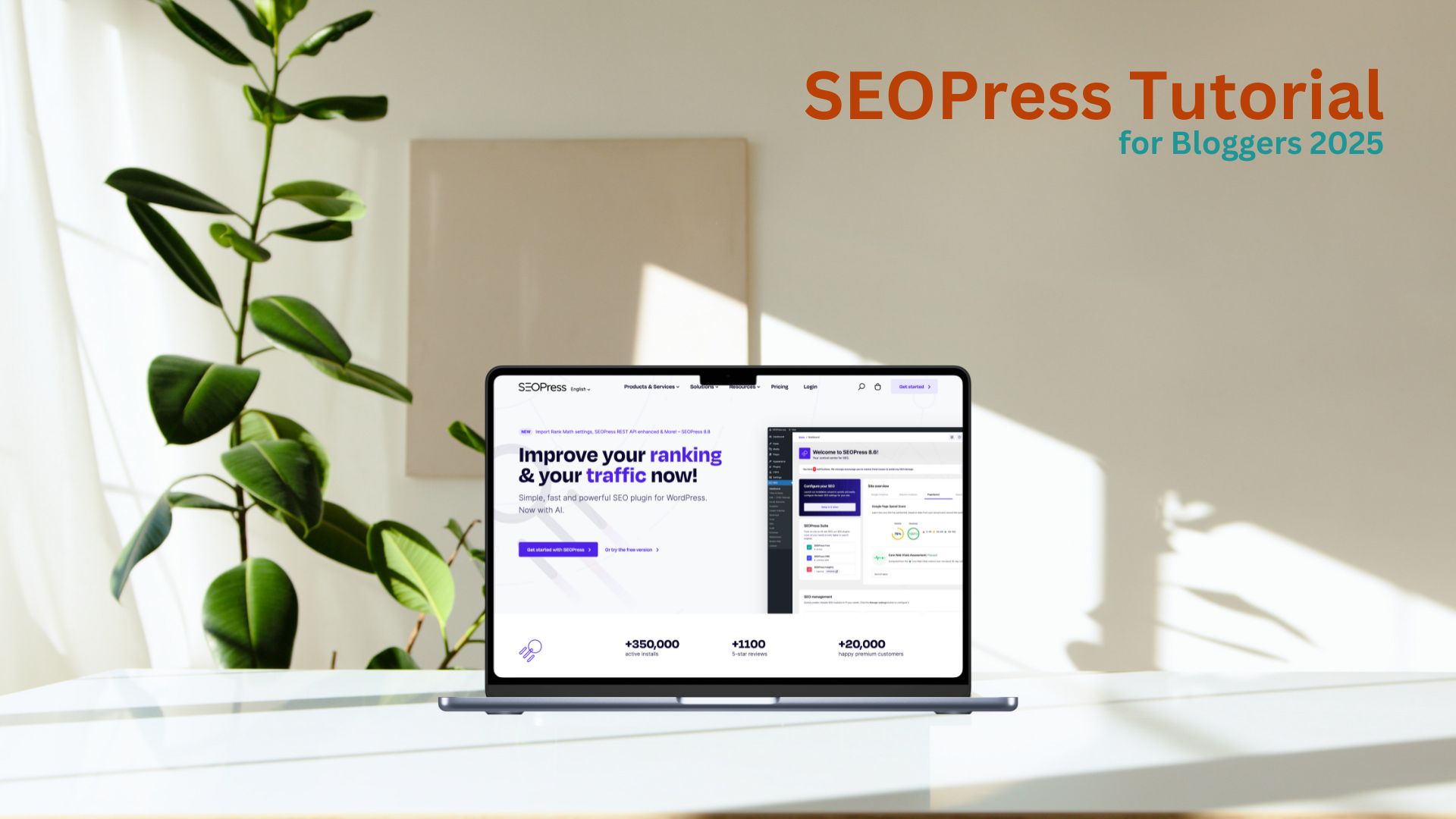If you’re a blogger in 2025, writing great content isn’t enough. To actually get traffic, your posts need to be structured for SEO, and that starts with using the right tools. One of the easiest and most affordable ways to optimize your WordPress posts is with SEOPress. It’s beginner-friendly, clean, and packed with all the features you need to start ranking fast.
In this tutorial, I’ll walk you through how to structure your blog posts using SEOPress to get better results in search engines, even if you’re starting from scratch.
What Is SEOPress?
SEOPress is a WordPress plugin that helps you optimize your blog posts for SEO. Think of it as your assistant for ranking on Google. It helps you:
- Set SEO titles and meta descriptions
- Add image alt text
- Generate XML sitemaps
- Set up schema (rich results)
- Connect to Google Analytics and Search Console
- Improve internal linking
Unlike other plugins, SEOPress doesn’t slow down your site, and its free version is more powerful than most paid tools.
Step 1: Install and Set Up SEOPress
Start by going to your WordPress dashboard. In the plugin section, search for SEOPress, install it, and activate it. Once activated, go to SEO > Configuration Wizard. SEOPress will guide you through basic settings like:
- Website type (select a blog or personal site)
- Your name or brand
- Whether you want to appear in search results
- Connecting to Google tools
Finish the setup in just a few minutes, and you’ll be ready to optimize your posts.
Step 2: Optimize Your Post Title and Meta Description
Click on any blog post and scroll down to the SEOPress section under the editor. You’ll see a preview of how your post appears on Google.
- SEO Title: Include your target keyword near the beginning. Keep it under 60 characters.
- Meta Description: Write a short summary that includes your keyword and a clear reason to click. Stay under 155 characters.
SEOPress shows a color-coded bar to help you hit the right length and structure.
Step 3: Use the Content Analysis Tool
SEOPress gives you live feedback as you write your post. It checks for things like:
- Keywords in the title, URL, first paragraph, and headers
- Keyword density (use naturally, not too much)
- Internal and external links
- Image alt text with keywords
- Readability and sentence length
Fix each point one at a time. You don’t need to hit 100%; just aim to cover the basics without forcing it.
Step 4: Structure Your Post for Easy Reading and SEO
Use proper formatting to make your post readable for both users and search engines.
- Use H2 tags for main sections and H3 tags for sub-sections
- Write in short paragraphs (2–3 sentences)
- Add bullet points or numbered lists
- Use bold or italic text to highlight key ideas
- Insert internal links to other blog posts and external links to trusted sites
This structure makes your post easier to scan, which improves dwell time and lowers bounce rate, two key signals for SEO.
Step 5: Add Images and Optimize Them
Images help break up long text and improve user experience, but they also need to be optimized.
- Compress images before uploading
- Rename file names with keywords (e.g., best-seo-plugin.jpg)
- Use descriptive alt text that includes your target phrase
SEOPress will let you know if you’ve missed any image alt tags in your content.
Step 6: Enable Schema Markup (Optional but Powerful)
Schema helps your blog show up with rich snippets in Google, like star ratings, FAQs, and how-to steps.
Go to SEO > Structured Data Types and choose the type that fits your blog post. SEOPress Pro gives you more flexibility here, but even the free version includes basic schema for articles and FAQs.
Step 7: Submit Your Post to Google
Once your post is published, go to Google Search Console and submit the new URL. This speeds up indexing and helps you start ranking sooner.
In SEOPress, make sure your XML sitemap is active. You’ll find it at yourdomain.com/sitemaps.xml. This sitemap tells Google where all your posts live.
Final Thoughts
If you want to grow your blog traffic in 2025, structure matters. SEOPress gives you everything you need to write blog posts that rank fast without paying for expensive tools or getting lost in tech.
Use this simple workflow:
- Install SEOPress
- Set up your title and meta
- Optimize with content analysis
- Format for readability
- Add images and schema
- Submit to Google
Stick to this for every post, and you’ll build momentum with organic traffic over time. If you want to make it even easier, you can use fast hosting like Hostinger, which works perfectly with WordPress and SEOPress. The faster your blog loads, the better your rankings.





